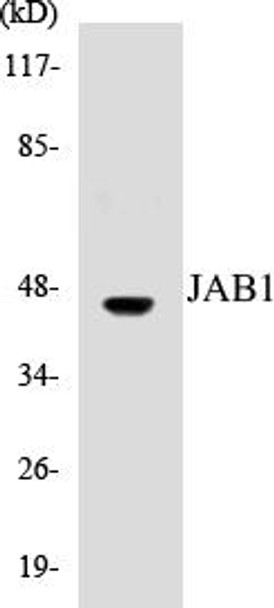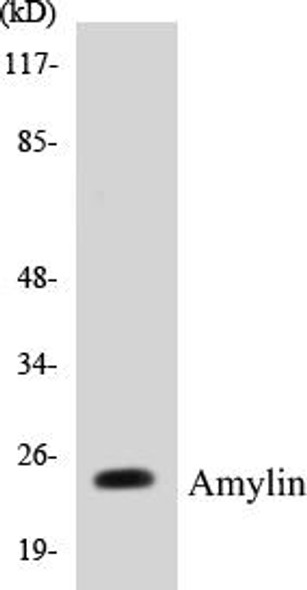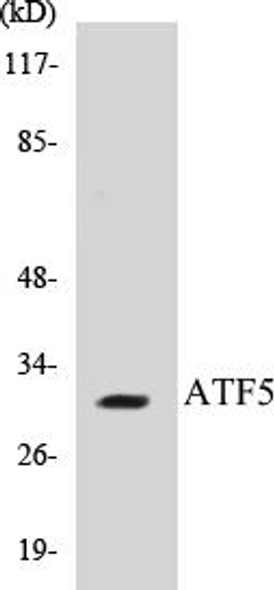Description
JAB1 Colorimetric Cell-Based ELISA Kit
The JAB1 Colorimetric Cell-Based ELISA Kit is a powerful tool for researchers looking to accurately quantify levels of JAB1 in cell lysates. With its high sensitivity and specificity, this kit ensures reliable and reproducible results, making it perfect for a variety of research applications.JAB1, also known as CSN5, is a key regulator of cell cycle progression and gene transcription. It has been implicated in various cellular processes, including DNA repair, apoptosis, and signal transduction.
Dysregulation of JAB1 has been linked to cancer, making it an important biomarker for studying oncogenesis and developing targeted therapies.Harness the power of the JAB1 Colorimetric Cell-Based ELISA Kit to advance your research and uncover new insights into the role of JAB1 in cellular homeostasis and disease progression.
| Product Name: | JAB1 Colorimetric Cell-Based ELISA |
| Product Code: | CBCAB00719 |
| ELISA Type: | Cell-Based |
| Target: | JAB1 |
| Reactivity: | Human, Mouse, Rat |
| Dynamic Range: | > 5000 Cells |
| Detection Method: | Colorimetric 450 nmStorage/Stability:4°C/6 Months |
| Format: | 96-Well Microplate |
The JAB1 Colorimetric Cell-Based ELISA Kit is a convenient, lysate-free, high throughput and sensitive assay kit that can detect JAB1 protein expression profile in cells. The kit can be used for measuring the relative amounts of JAB1 in cultured cells as well as screening for the effects that various treatments, inhibitors (ie siRNA or chemicals), or activators have on JAB1.
Qualitative determination of JAB1 concentration is achieved by an indirect ELISA format. In essence, JAB1 is captured by JAB1-specific primary antibodies while the HRP-conjugated secondary antibodies bind the Fc region of the primary antibody. Through this binding, the HRP enzyme conjugated to the secondary antibody can catalyze a colorimetric reaction upon substrate addition. Due to the qualitative nature of the Cell-Based ELISA, multiple normalization methods are needed:
| 1. | A monoclonal antibody specific for human GAPDH is included to serve as an internal positive control in normalizing the target absorbance values. |
| 2. | Following the colorimetric measurement of HRP activity via substrate addition, the Crystal Violet whole-cell staining method may be used to determine cell density. After staining, the results can be analysed by normalizing the absorbance values to cell amounts, by which the plating difference can be adjusted. |
| Database Information: | Gene ID: 8533, UniProt ID: Q9UNS2, OMIM: 604665, Unigene: Hs.6076 |
| Gene Symbol: | COPS3 |
| Sub Type: | None |
| UniProt Protein Function: | COPS3: Component of the COP9 signalosome complex (CSN), a complex involved in various cellular and developmental processes. The CSN complex is an essential regulator of the ubiquitin (Ubl) conjugation pathway by mediating the deneddylation of the cullin subunits of SCF-type E3 ligase complexes, leading to decrease the Ubl ligase activity of SCF-type complexes such as SCF, CSA or DDB2. The complex is also involved in phosphorylation of p53/TP53, c-jun/JUN, IkappaBalpha/NFKBIA, ITPK1 and IRF8/ICSBP, possibly via its association with CK2 and PKD kinases. CSN-dependent phosphorylation of TP53 and JUN promotes and protects degradation by the Ubl system, respectively. Belongs to the CSN3 family. 2 isoforms of the human protein are produced by alternative splicing. |
| UniProt Protein Details: | Protein type:Ubiquitin conjugating system Chromosomal Location of Human Ortholog: 17p11.2 Cellular Component: nucleoplasm; signalosome; cytoplasm; nucleus Molecular Function:protein binding Biological Process: ubiquitin-dependent protein catabolic process; response to light stimulus; cullin deneddylation; in utero embryonic development; signal transduction |
| NCBI Summary: | The protein encoded by this gene possesses kinase activity that phosphorylates regulators involved in signal transduction. It phosphorylates I kappa-Balpha, p105, and c-Jun. It acts as a docking site for complex-mediated phosphorylation. The gene is located within the Smith-Magenis syndrome region on chromosome 17. Two transcript variants encoding different isoforms have been found for this gene. [provided by RefSeq, Nov 2010] |
| UniProt Code: | Q9UNS2 |
| NCBI GenInfo Identifier: | 55976621 |
| NCBI Gene ID: | 8533 |
| NCBI Accession: | Q9UNS2.3 |
| UniProt Secondary Accession: | Q9UNS2,O43191, Q7LDR6, B2R683, B4DY81, |
| UniProt Related Accession: | Q9UNS2 |
| Molecular Weight: | 423 |
| NCBI Full Name: | COP9 signalosome complex subunit 3 |
| NCBI Synonym Full Names: | COP9 signalosome subunit 3 |
| NCBI Official Symbol: | COPS3 |
| NCBI Official Synonym Symbols: | CSN3; SGN3 |
| NCBI Protein Information: | COP9 signalosome complex subunit 3; signalosome subunit 3; COP9 complex subunit 3; JAB1-containing signalosome subunit 3; COP9 constitutive photomorphogenic homolog subunit 3 |
| UniProt Protein Name: | COP9 signalosome complex subunit 3 |
| UniProt Synonym Protein Names: | JAB1-containing signalosome subunit 3 |
| UniProt Gene Name: | COPS3 |
| UniProt Entry Name: | CSN3_HUMAN |
| Component | Quantity |
| 96-Well Cell Culture Clear-Bottom Microplate | 2 plates |
| 10X TBS | 24 mL |
| Quenching Buffer | 24 mL |
| Blocking Buffer | 50 mL |
| 15X Wash Buffer | 50 mL |
| Primary Antibody Diluent | 12 mL |
| 100x Anti-Phospho Target Antibody | 60 µL |
| 100x Anti-Target Antibody | 60 µL |
| Anti-GAPDH Antibody | 60 µL |
| HRP-Conjugated Anti-Rabbit IgG Antibody | 12 mL |
| HRP-Conjugated Anti-Mouse IgG Antibody | 12 mL |
| SDS Solution | 12 mL |
| Stop Solution | 24 mL |
| Ready-to-Use Substrate | 12 mL |
| Crystal Violet Solution | 12 mL |
| Adhesive Plate Seals | 2 seals |
The following materials and/or equipment are NOT provided in this kit but are necessary to successfully conduct the experiment:
- Microplate reader able to measure absorbance at 450 nm and/or 595 nm for Crystal Violet Cell Staining (Optional)
- Micropipettes with capability of measuring volumes ranging from 1 µL to 1 ml
- 37% formaldehyde (Sigma Cat# F-8775) or formaldehyde from other sources
- Squirt bottle, manifold dispenser, multichannel pipette reservoir or automated microplate washer
- Graph paper or computer software capable of generating or displaying logarithmic functions
- Absorbent papers or vacuum aspirator
- Test tubes or microfuge tubes capable of storing ≥1 ml
- Poly-L-Lysine (Sigma Cat# P4832 for suspension cells)
- Orbital shaker (optional)
- Deionized or sterile water
*Note: Protocols are specific to each batch/lot. For the correct instructions please follow the protocol included in your kit.
| Step | Procedure |
| 1. | Seed 200 µL of 20,000 adherent cells in culture medium in each well of a 96-well plate. The plates included in the kit are sterile and treated for cell culture. For suspension cells and loosely attached cells, coat the plates with 100 µL of 10 µg/ml Poly-L-Lysine (not included) to each well of a 96-well plate for 30 minutes at 37°C prior to adding cells. |
| 2. | Incubate the cells for overnight at 37°C, 5% CO2. |
| 3. | Treat the cells as desired. |
| 4. | Remove the cell culture medium and rinse with 200 µL of 1x TBS, twice. |
| 5. | Fix the cells by incubating with 100 µL of Fixing Solution for 20 minutes at room temperature. The 4% formaldehyde is used for adherent cells and 8% formaldehyde is used for suspension cells and loosely attached cells. |
| 6. | Remove the Fixing Solution and wash the plate 3 times with 200 µL 1x Wash Buffer for five minutes each time with gentle shaking on the orbital shaker. The plate can be stored at 4°C for a week. |
| 7. | Add 100 µL of Quenching Buffer and incubate for 20 minutes at room temperature. |
| 8. | Wash the plate 3 times with 1x Wash Buffer for 5 minutes each time. |
| 9. | Add 200 µL of Blocking Buffer and incubate for 1 hour at room temperature. |
| 10. | Wash 3 times with 200 µL of 1x Wash Buffer for 5 minutes each time. |
| 11. | Add 50 µL of 1x primary antibodies (Anti-JAB1 Antibody and/or Anti-GAPDH Antibody) to the corresponding wells, cover with Parafilm and incubate for 16 hours (overnight) at 4°C. If the target expression is known to be high, incubate for 2 hours at room temperature. |
| 12. | Wash 3 times with 200 µL of 1x Wash Buffer for 5 minutes each time. |
| 13. | Add 50 µL of 1x secondary antibodies (HRP-Conjugated AntiRabbit IgG Antibody or HRP-Conjugated Anti-Mouse IgG Antibody) to corresponding wells and incubate for 1.5 hours at room temperature. |
| 14. | Wash 3 times with 200 µL of 1x Wash Buffer for 5 minutes each time. |
| 15. | Add 50 µL of Ready-to-Use Substrate to each well and incubate for 30 minutes at room temperature in the dark. |
| 16. | Add 50 µL of Stop Solution to each well and read OD at 450 nm immediately using the microplate reader. |
(Additional Crystal Violet staining may be performed if desired – details of this may be found in the kit technical manual.)






